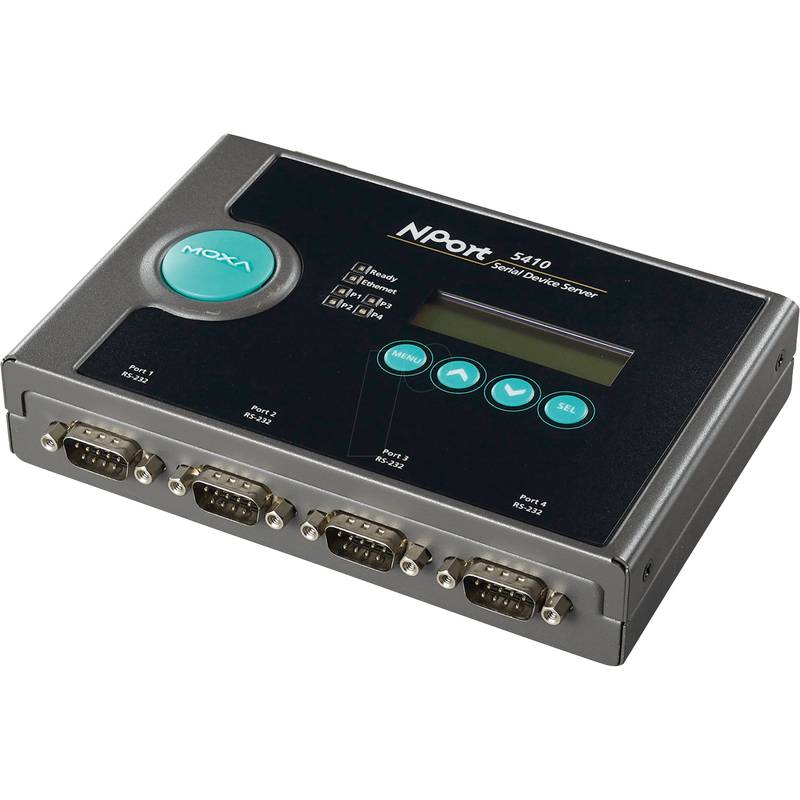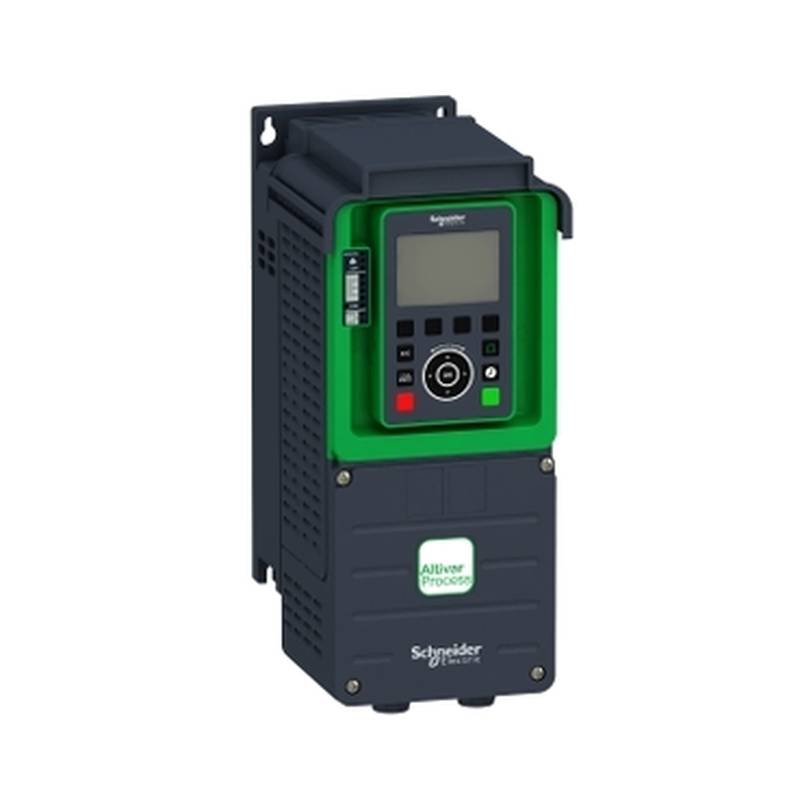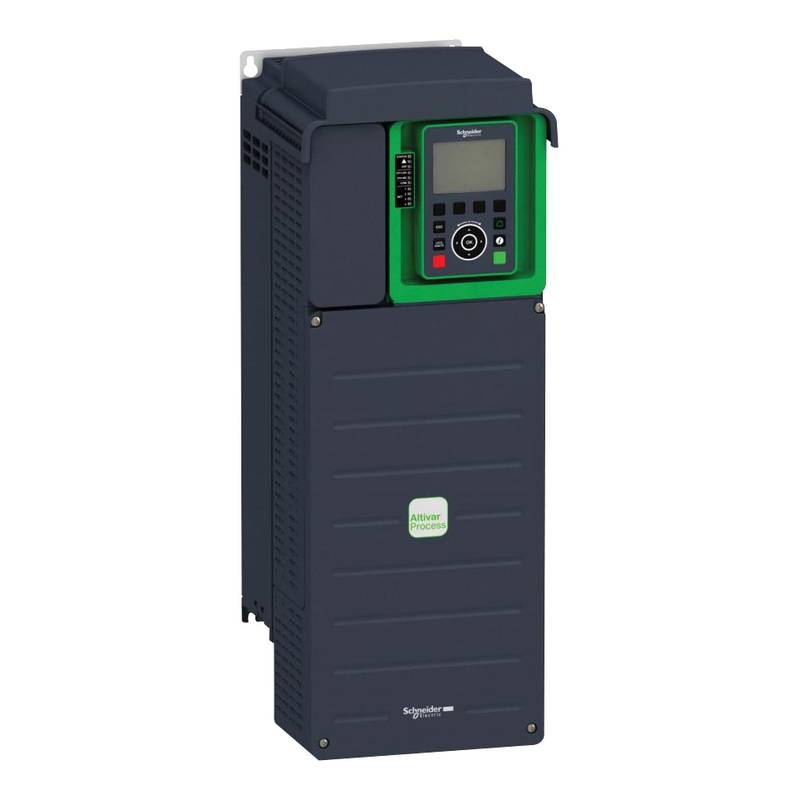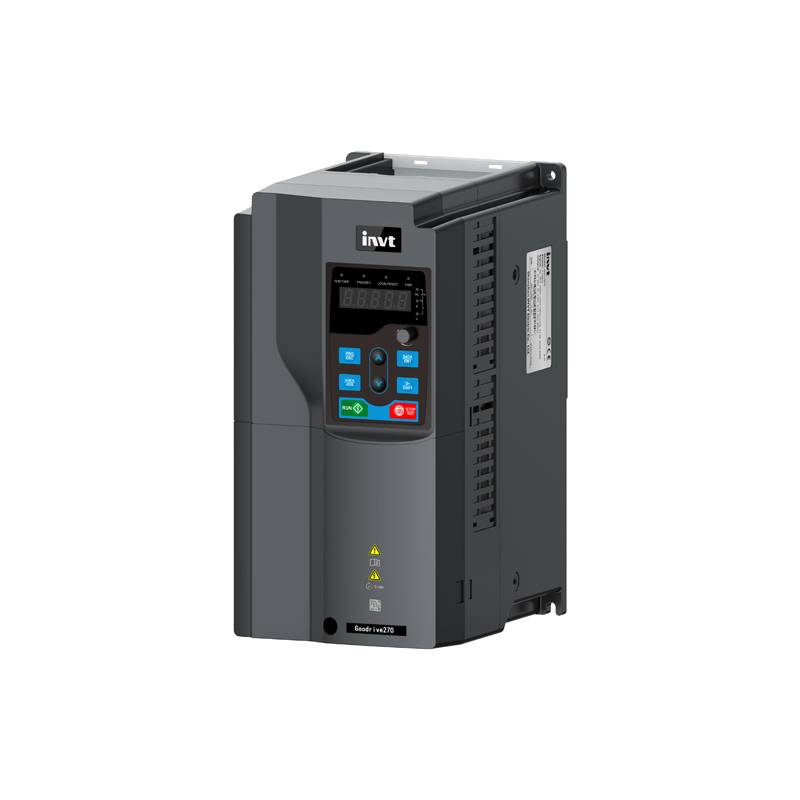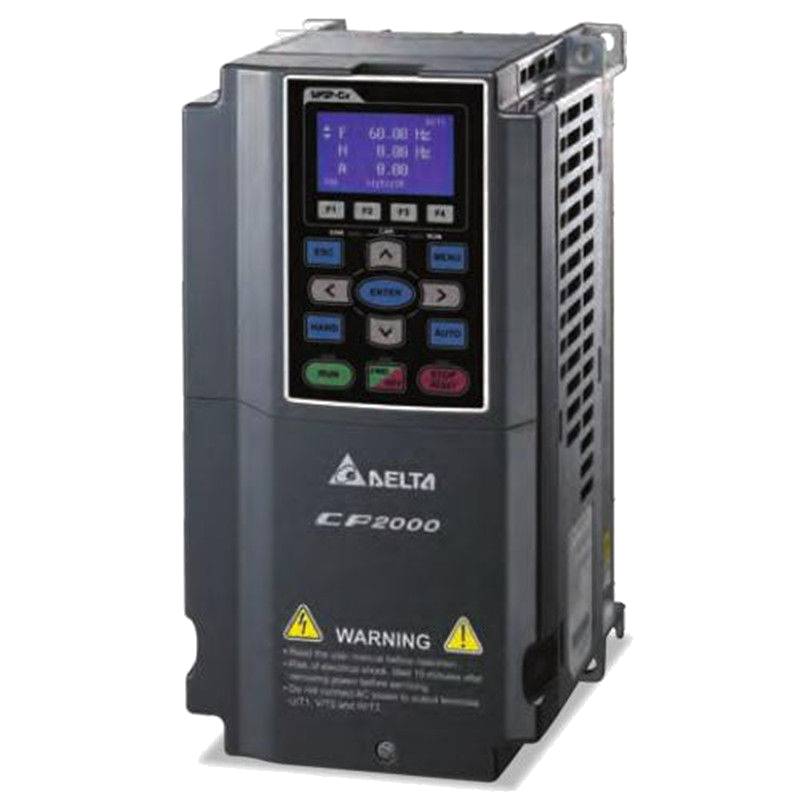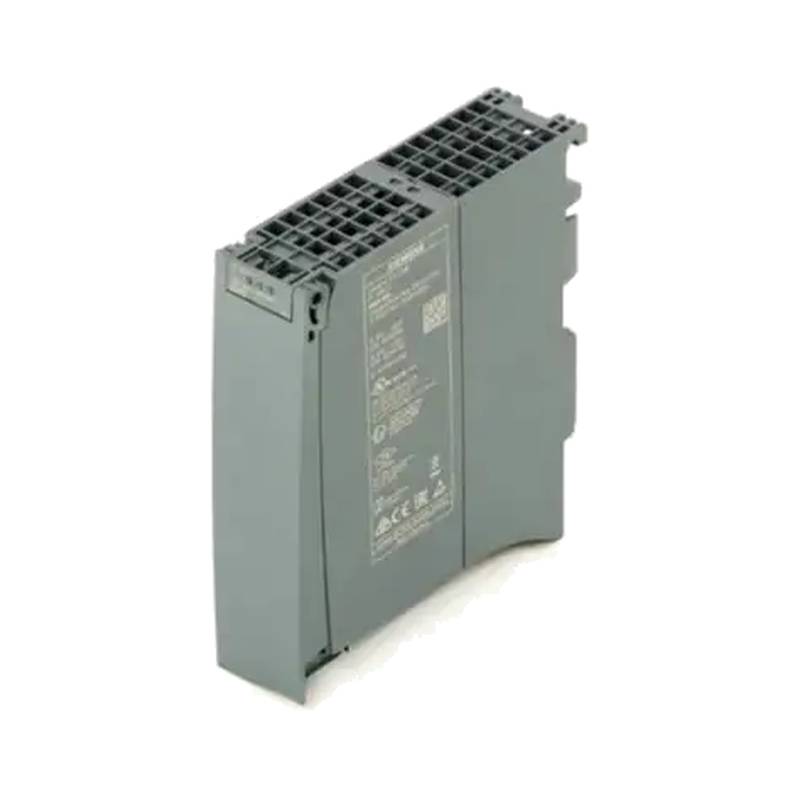
The Moxa NPort 5430 stands as a robust multi-function industrial communication protocol converter, engineered to bridge the gap between legacy serial devices and modern Ethernet networks. Its design prioritizes reliability and ease of integration, making it an indispensable tool for industrial automation and control systems. Key advantages include its high port density, flexible protocol conversion capabilities, and rugged industrial-grade construction. The NPort 5430 boasts four RS-232 serial ports, offering a significant advantage for connecting multiple serial devices simultaneously. Its ability to support TCP Server, TCP Client, UDP, and Real COM modes ensures broad compatibility with diverse network architectures. Furthermore, the device operates efficiently within a wide temperature range, from -40 to 75 °C, and features 15 kV ESD protection for all serial ports, guaranteeing operational integrity in harsh environments.
Product Specifications
| Feature | Specification |
| :------------------ | :------------------------------------------------ |
| Serial Ports | 4 x RS-232 |
| Ethernet Port | 1 x 10/100BaseT(X) Auto-Sensing, Auto MDI/MDIX |
| Serial Data Rates | 50 bps to 230.4 kbps |
| IP Protection | IP30 |
| Operating Temperature| -40 to 75 °C |
| Power Input | 12 to 45 VDC (2 x power inputs for redundancy) |
| Mounting | DIN-rail, Wall-mount |
| Dimensions | 51 x 145 x 114 mm (2.01 x 5.71 x 4.49 in) |
| ESD Protection | 15 kV on all serial ports |
Core Features & Market Positioning
The Moxa NPort 5430 distinguishes itself in the competitive industrial communication converter market through its exceptional port density and versatile operating modes. Unlike many alternatives that offer fewer serial interfaces or limited protocol support, the NPort 5430 consolidates four RS-232 ports into a single, compact unit. This high port count significantly reduces the number of devices required for comprehensive system integration, leading to lower costs and simplified rack space management. Its robust industrial design, including a wide operating temperature range and comprehensive ESD protection, positions it as a reliable solution for mission-critical applications where network stability is paramount. The device’s ability to seamlessly transition between TCP Server, TCP Client, UDP, and Real COM modes provides unparalleled flexibility, enabling engineers to adapt to evolving network requirements without replacing hardware. This adaptability is a key differentiator, appealing to industries that require long-term, scalable solutions.
Key Application Scenarios
The Moxa NPort 5430 excels in scenarios demanding the integration of multiple legacy serial devices into an industrial Ethernet infrastructure. Common use cases include connecting various sensors, actuators, and control panels to a central SCADA system or a plant-wide network. In manufacturing environments, it facilitates the communication between PLC controllers and higher-level management systems, enabling real-time data acquisition and process optimization. For building automation, the NPort 5430 can bridge older HVAC control systems or security equipment to an IP network, allowing for remote monitoring and control. Furthermore, its suitability for harsh conditions makes it ideal for applications in oil and gas, water treatment, and transportation, where robust and reliable communication links are essential for operational efficiency and safety.
Practical System Integration Guidance
Integrating the Moxa NPort 5430 into existing industrial networks is a straightforward process, facilitated by Moxa’s user-friendly management tools. For initial setup, users can connect to the NPort 5430 via its default IP address or through Moxa's Windows utility, Moxa PComm. The device supports multiple operating modes, including TCP Server, TCP Client, UDP, and Real COM. Selecting the appropriate mode is crucial for seamless communication. For instance, in TCP Server mode, the NPort 5430 listens for incoming connections from Ethernet devices, ideal for centralized data collection. In TCP Client mode, the NPort initiates connections to a specified server. The Real COM mode is particularly valuable as it allows existing serial communication software to interact with the NPort as if it were a physical serial port, minimizing software reconfigurations. Wiring typically involves standard RS-232 DB9 connectors for the serial interfaces and an RJ45 connector for the Ethernet port. Power is supplied via a wide-range DC input, supporting redundant power supplies for enhanced reliability.
Operation and Risk Mitigation
Operating the Moxa NPort 5430 requires adherence to standard industrial network best practices to ensure optimal performance and mitigate potential risks. Regular firmware updates from Moxa are recommended to address any security vulnerabilities and enhance functionality. For troubleshooting, common issues often relate to incorrect IP addressing, firewall restrictions, or serial port configuration mismatches. Moxa provides comprehensive diagnostic tools, including built-in event logs and network traffic monitoring capabilities, to aid in identifying and resolving problems. The device's 15 kV ESD protection on all serial ports is a critical safety feature that significantly reduces the risk of damage from electrostatic discharge, a common concern in industrial settings. Furthermore, utilizing the redundant power input feature is a proactive measure against power supply failures, minimizing downtime and operational disruption.
Scalability & Long-Term Value
The Moxa NPort 5430 offers significant scalability and long-term value, particularly for organizations looking to modernize their infrastructure without a complete overhaul. Its ability to convert multiple serial protocols to Ethernet ensures that existing investments in serial-based equipment can continue to be utilized within a modern IP-based network. This phased approach to upgrading reduces the total cost of ownership and minimizes disruption to ongoing operations. For integration with Industrial Internet of Things (IIoT) initiatives, the NPort 5430 serves as a vital gateway, enabling data from traditionally isolated serial devices to be collected, analyzed, and acted upon in real-time. Moxa's commitment to backward compatibility and continuous product development ensures that devices like the NPort 5430 remain relevant and supported within evolving industrial automation architectures.
FAQs
What are the primary advantages of using the Moxa NPort 5430?
The NPort 5430 offers high serial port density, supporting four RS-232 interfaces in one unit. This reduces hardware costs and simplifies installations. It also provides flexible protocol conversion, seamlessly integrating serial devices with Ethernet networks.
Its robust industrial design ensures reliable operation in harsh environments, featuring a wide temperature range and robust ESD protection. This makes it ideal for critical automation applications.
The device's multiple operating modes (TCP Server, TCP Client, UDP, Real COM) offer significant adaptability, minimizing the need for software changes and future hardware upgrades.
How does the Moxa NPort 5430 facilitate system integration?
The NPort 5430 simplifies integration by acting as a transparent bridge between serial devices and Ethernet. It supports Moxa's Real COM utility, allowing legacy serial applications to function without modification.
Its standard Ethernet interface connects easily to any industrial network switch or router. Configuration can be managed via web interface, Telnet, or Moxa's Windows utility, offering flexible setup options.
The device supports various network protocols like TCP/IP, UDP, and HTTP, ensuring compatibility with a broad range of industrial control systems and SCADA platforms.
What are common troubleshooting steps for the Moxa NPort 5430?
Verify IP address settings and ensure network connectivity. Check that the NPort is on the same subnet or properly routed on the network.
Confirm serial port configurations (baud rate, data bits, parity, stop bits) match the connected serial devices exactly. Also, ensure the correct operating mode (Server/Client/UDP) is selected.
Review the NPort's event logs for error messages and consult Moxa's documentation for specific fault codes. Check physical connections for any damage or loose cables.
Can the Moxa NPort 5430 connect to Modbus devices over Ethernet?
Yes, the NPort 5430 can transmit Modbus TCP/IP commands over Ethernet to Modbus RTU serial devices. It acts as a gateway for Modbus communication.
Engineers can configure the NPort to translate Modbus RTU from serial to Modbus TCP/IP for network transmission. This enables Modbus devices to be accessed remotely via an Ethernet network.
This functionality is crucial for modernizing existing Modbus RTU systems without replacing field devices, leveraging the NPort as a protocol converter.
What are the power requirements for the Moxa NPort 5430?
The NPort 5430 requires a DC power input voltage ranging from 12 to 45 VDC. This wide range offers flexibility in power source selection.
It features dual power inputs, allowing for redundant power connections to enhance system reliability and prevent downtime due to power supply failure.
The device also includes built-in overcurrent protection, safeguarding against electrical surges and ensuring operational safety.
How does the NPort 5430 handle serial port emulation?
The NPort 5430 supports "Real COM" mode, which emulates standard serial ports on a PC. This allows existing software designed for serial communication to work seamlessly.
When in Real COM mode, the NPort makes the connected serial device appear as a virtual COM port on the host computer. This eliminates the need to rewrite software applications.
This feature significantly simplifies the integration of older serial equipment into modern Windows or Linux environments connected via Ethernet.
What is the maximum serial data rate supported by the NPort 5430?
The NPort 5430 supports serial data rates up to 230.4 kbps. This high speed is suitable for many industrial communication protocols.
This data rate ensures efficient data transfer for applications requiring relatively fast serial communication, such as device configuration or data logging.
It's important to match the serial port speed on the NPort with the speed configured on the connected serial device for reliable communication.
Is the Moxa NPort 5430 suitable for hazardous environments?
While the NPort 5430 is designed for industrial use with a wide operating temperature range (-40 to 75°C), it has an IP30 rating. This indicates protection against solid objects larger than 2.5mm but not against water ingress.
For environments with specific hazardous classifications (e.g., explosion-proof zones), ATEX or similar certifications would be required, which this specific model may not possess. Always check specific certifications for hazardous locations.
However, its robust construction, wide temperature tolerance, and ESD protection make it suitable for many demanding industrial settings outside of highly corrosive or wet conditions.
How does the NPort 5430 support network redundancy?
The NPort 5430 supports redundant power inputs, allowing two separate power sources to be connected simultaneously. If one source fails, the other takes over automatically.
While this model does not natively support network redundancy protocols like STP/RSTP on its single Ethernet port, it can be integrated into redundant network architectures at a higher level.
This dual power input feature is critical for ensuring continuous operation in applications where power outages could cause significant disruption or safety concerns.
What types of serial connectors does the Moxa NPort 5430 use?
The Moxa NPort 5430 utilizes standard DB9 male connectors for its four RS-232 serial ports. This is a common interface in industrial automation.
These DB9 connectors are directly accessible on the front panel of the device, facilitating easy connection and disconnection of serial cables.
Each serial port also features 15 kV ESD (Electrostatic Discharge) protection, which helps prevent damage to the port and connected devices from static electricity.














